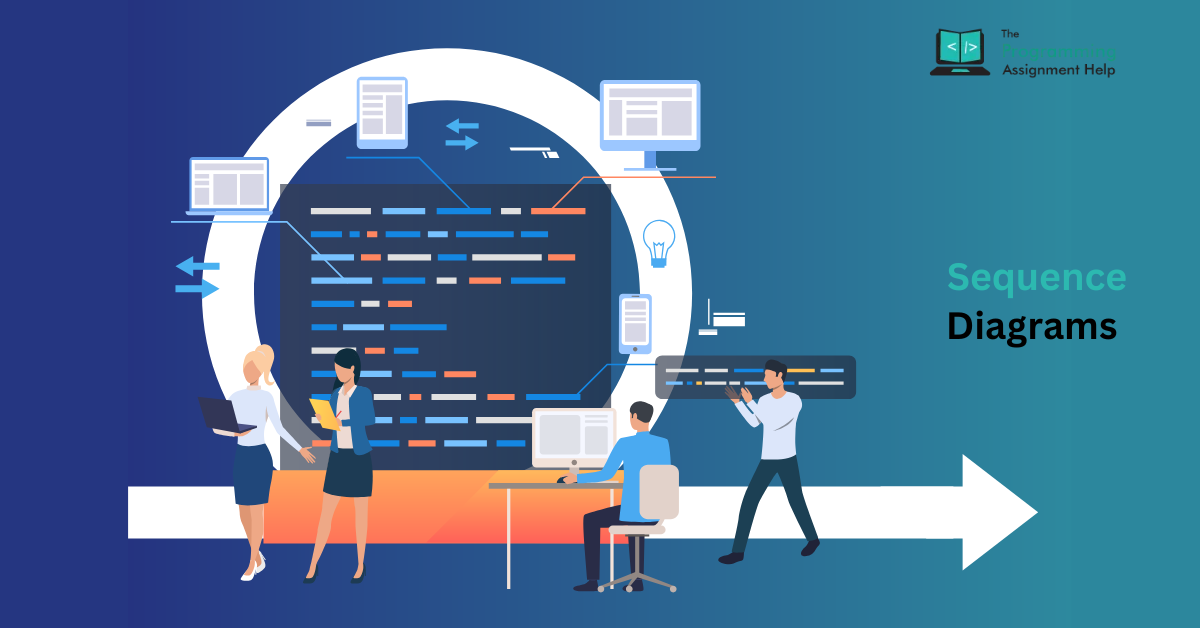
- 14th Aug 2025
- 15:40 pm
- Admin
Software engineering requires good communication of system processes. A Sequence Diagram is one of the best instruments to be used in this case one and it is part of the Unified Modeling Language (UML). It is a visual description of messages and operations flowing along among various objects within a system during a specified time interval. As a student of software design or as a professional developer, you can make great progress towards learning how to plan, document and communicate complex processes by learning to use sequence diagrams.
What is a Sequence Diagram?
A sequence diagram is a kind of interaction diagram in UML representing the interaction of objects in a particular scenario. It illustrates the sequence of transmitting messages, which demonstrates the sequence of the operations that are carried out throughout a process.
Key components of a sequence diagram include:
- Actors – Users or external systems interacting with the process.
- Objects – Internal elements that perform operations or store data.
- Messages – Communication between objects, often representing method calls or signals.
- Lifelines – Vertical dashed lines showing the life span of an object during the interaction.
- Activation bars – Indicate when an object is active and performing a process.
Why Sequence Diagrams Are Important in System Design
-
Clear Visualization of Process Flow
Sequence diagrams are used to simplify a complicated process by representing it as a step-by-step visual flow so that stakeholders can understand how systems are behaving.
-
Effective Communication Between Teams
Sequence diagrams serve as a shared starting point amongst developers, testers, and business analysts so that there will not be much misunderstanding and alignment.
-
Early Error Detection
Mapping interactions at an early part of the design process, will allow to detect logic gaps, missing pieces, or repetitive processes before you even start implementing.
-
Improved Documentation
The sequence diagrams are also useful documentation to be used in future maintenance and system upgrades and can assist the new team members with meeting the system.
When to Use a Sequence Diagram
Sequence diagrams are particularly useful in scenarios such as:
- Documenting how a user request flows through an application.
- Mapping system-to-system communication in distributed architectures.
- Designing API interactions between software components.
- Explaining error handling sequences for better fault management.
Steps to Create an Effective Sequence Diagram
- Identify the Scenario:
Select a particular use case or process to work with. Attempting to model too many interactions into one diagram can make it confusing.
- List Actors and Objects
Identify the elements involved in the process. Have external (users, APIs) and internal components (controllers, services, databases).
- Define the Sequence of Messages
Arrange the order of communications from top to bottom, showing how data flows between components.
- Add Lifelines and Activation Bars
Ensure each object has a lifeline and clearly mark when it is active.
- Verify for Logical Accuracy
Double-check that the interactions make sense and follow the correct business rules.
Example: Online Shopping Checkout Process
Imagine designing the checkout process for an e-commerce website. A sequence diagram for this scenario could include:
- Actor: Customer
- Objects: Web Application, Payment Gateway, Inventory System, Email Service
The sequence might look like this:
- Customer clicks “Checkout” → Web Application verifies the cart.
- Web Application sends a payment request → Payment Gateway processes the transaction.
- Payment Gateway confirms payment → Web Application updates the inventory.
- Web Application sends order details → Email Service sends confirmation to the customer.
This visualization helps every team member understand exactly how the checkout system works, ensuring smooth collaboration and implementation.
Best Practices for Sequence Diagrams
- Keep diagrams simple and focused on one process.
- Use clear and consistent naming for messages and objects.
- Avoid clutter by limiting unnecessary details.
- Review diagrams with team members to ensure accuracy.
Conclusion
Sequence diagrams are an important constituent of software development process as it depicts a sequence of interactions of objects with time. They allow students and professionals to visualize processes, detect possible problems before they happen and ensure good communication among team members. These diagrams equally form an important reference during the entire project lifecycle making it accurate during design and implementation. Students engaged in academic activities can use UML Diagram Assignment Help to offer expert guidance that acts as a guide to deliver refined and well established diagrams which fits either technical or academic standards.








